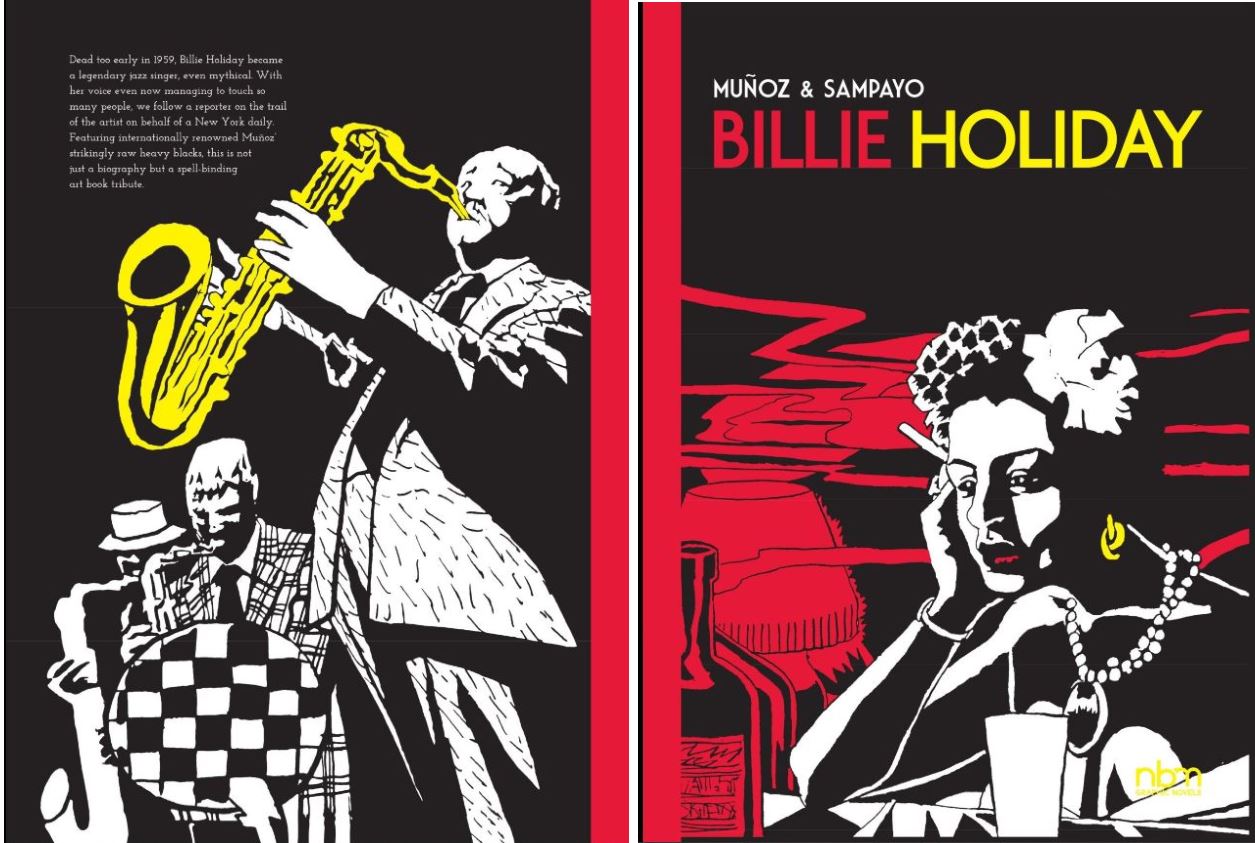
By José Muñoz & Carlos Sampayo, translated by Katy MacRae, Robert Boyd & Kim Thompson (NBM)
ISBN: 978-1-68112-093-5 (HB/Digital Edition)
Argentinian José Antonio Muñoz was born on July 10th 1942 in Buenos Aires and studied at the prestigious Escuela Panamericana de Arte de Buenos Aires, under comics geniuses Hugo Pratt and Alberto Breccia. Aged 18, he joined the prolific and prestigious Francisco Solano Lopez studio and soon his work was appearing in Hora Cero and Frontera Extra all whilst ghosting episodes of legendary serial Ernie Pike for his old tutor Pratt.
Through the Argentine-based Solano Lopez outfit, he found work on strips for UK publishing giant Amalgamated Press/IPC, but had no real feeling for the material he was producing. Moreover, like so many others, he was increasingly uncomfortable living in his homeland. Eventually (in December 1972) he was compelled to leave Argentina as the military junta tightened its totalitarian grip on the country, clamping down on free expression and the arts, as well as all forms of overt or covert dissent.
Moving to England, Spain and later Italy, in 1974 Muñoz met again fellow émigré and creative soul-mate Carlos Sampayo in Barcelona and convinced the poet, music critic, copywriter and author to try his hand at comics. The result was a stunning expressionistic noir Private Detective masterpiece of loss and regret called Alack Sinner.
Born in 1943, Sampayo grew up with all the same formative experiences as his artistic comrade and, after a similar dispiriting start (he’d tried writing and being a literary editor before resigning himself to work in advertising), moved to Spain in 1972. The pair were first introduced in 1971 when mutual friend Oscar Zarate left Argentina at the forefront of the creative exodus sparked by the rise of “the Colonels”…
Urgently urged by mentor Hugo Pratt to “do something of your own”, Muñoz & Sampayo started producing grimly gritty adventures of an ex-New York cop-turned-shamus haunting the shadows of the world’s greatest, darkest city, encountering the bleak underbelly of the metropolis and all the outcasts, exiles and scum thrown together at its margins. Alack Sinner debuted in experimental Italian anthology Alter Linus, was picked up by Belgian giant Casterman for A Suivre and latterly compiled in albums across the continent. The feature was set solidly in history, confronting issues of prejudice, bigotry and corruption head-on through shocking words and imagery. In one of their stories Sinner played merely a bit part as the pages examined the life, times and fate of one of the most ill-starred women in the history of Jazz and modern America.
And that’s where this powerfully moving biography finds us…
Originally translated and published by Fantagraphics in the early 1990s, NBM’s Billie Holiday takes us into the heart and soul of the doomed and self-destructive nightingale whose incredible voice was all-but-lost to the world for decades before kinder, more evolved ears of all colours rescued her works from oblivion. This epic tome dissects her life and influence through the eyes of distant observers, opening with Francis Marmande’s essay ‘Billie Holiday: Don’t Explain’ providing a fact- and photo-packed biographical appreciation of the singer in her heyday.
Eleanora Holiday – also known as Billie and “Lady Day” – was born April 7th 1915, and died July 17th 1959. In between those dates she won many fans and earned tons of money, but it never bought her acceptance in a world where black skin provoked revulsion, cruelty and smug superiority. It didn’t even buy her protection from New York cops who considered her a prostitute made good, and an uppity subhuman who never knew her proper place…
Billie lost money as quickly – or even faster – as she earned it: to unscrupulous friends and management, or corrupt officials, although most of it was frittered away by the succession of cheating, brutal men she was hopelessly drawn to and whom she could never resist.
A short, stark story of graphic flair offering many powerful full-page images, the tale begins in 1989 as a journalist is assigned to write a feature commemorating the 30th anniversary of a Jazz singer. He’s never heard of Billie Holiday but is good at his job and starts digging…
He reads about a poor black girl raped as a child and forced into child prostitution who (almost) escaped a commonplace fate by singing. She became successful, but never dodged the traps and pitfalls of her life: booze, drugs, sleazy men, manipulative bosses and her own seeming hunger for conflict. Even so, the way she sang was uniquely hers and changed lives forever. She called herself Billie and always performed with a flower in her hair…
For a while the great and good came to watch and hear, and jazz greats like Louis Armstrong and Lester Young came too. Their gifts also gave them limited entry to the privileged life – but never enough acceptance – but they seemed to understand. Never enough, though, to save Billie from herself.
This intensely personal interpretation is less biography and more a heartfelt paean of appreciation, channelling and exploring the hard, harsh tone of those troubled times where talented, dogged souls fought for recognition and survival at the fringes of a world determined to exploit and consume them. In that respect, no one was more exploited than Lady Day…
Also included here, ‘Jazz Sessions’ offers a stunning gallery of a dozen stark, chiaroscuric, powerfully evocative images based on scenes from Holiday’s short, sad life and dedication to the freedom of the musical form of Blues and Jazz that she graced and transformed through her vocalisations.
Moving, justifiably angry and pitifully sad, this tale holds the singer up to the light and must be read. Just remember, there’s no Happy Ever After here.
© 1991 Casterman. All rights reserved. © 2017 NBM for the English version.
